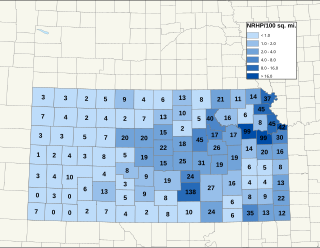
There are over 1,400 buildings, sites, districts, and objects in Kansas listed on the National Register of Historic Places in Kansas. NRHP listings appear in 101 of the state's 105 counties.

Art's Auto is a historic former service station at 5–7 Lonsdale Avenue in Pawtucket, Rhode Island. It is a single-story brick structure with a flat roof and a series of towers capped by pointed roofs. It was built as an automotive service station in 1927–28 for Arthur Normand at a time when gasoline producers competed, in part, by the shape and style of their service stations. This station is one of two stations known to survive from this period in the state. Its front facade has a dramatic presentation, with square towers topped by pyramidal roofs at the corners, and a projecting round bay in the center topped by a conical roof, with windows arrayed around the bay and on its flanks. The building is currently used as an office for Anchor Financial. Art's Auto was listed on the National Register of Historic Places in 1978.

The Maine Supply Company Building is an historic commercial building at 415-417 Lisbon Street in Lewiston, Maine. Built in 1911, this Renaissance Revival building is the best-preserved local work of Miller & Mayo, and is also notable as housing the first known automotive service center in the state. The building was listed on the National Register of Historic Places in 1986.
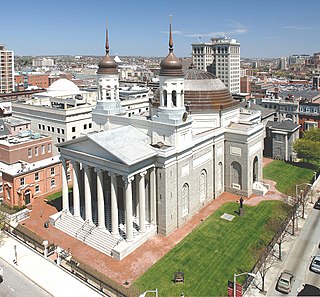
The Cathedral Hill Historic District is an area in Baltimore, Maryland. It lies in the northern part of Downtown just south of Mount Vernon. Roughly bounded by Saratoga Street, Park Avenue, Hamilton Street, and St. Paul Street, these 10 or so blocks contain some of the most significant buildings in Baltimore. The area takes its name from the Basilica of the Assumption which sits in the heart of the district. Despite the number of large religious structures in the area, the district's buildings are primarily commercial in character, with a broad collection of significant commercial structures ranging in date from 1790 to 1940.
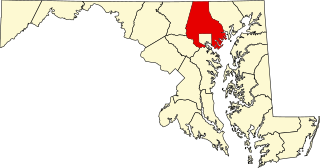
This is a list of the National Register of Historic Places listings in Baltimore County, Maryland.

This is a list of the National Register of Historic Places listings in Fillmore County, Minnesota. It is intended to be a complete list of the properties and districts on the National Register of Historic Places in Fillmore County, Minnesota, United States. The locations of National Register properties and districts for which the latitude and longitude coordinates are included below, may be seen in an online map.
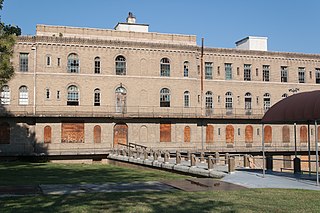
Sydenham Hospital for Communicable Diseases, also known as Montebello State Hospital or Montebello State Chronic Disease Hospital, was a hospital and is a national historic district in Baltimore, Maryland, United States. It was originally constructed in 1922-1924, and the campus consists of seven Italian Renaissance Revival style buildings: the main hospital building, the administration building, the kitchen, the nurses’ home, the laundry with servants’ quarters above, the garage, and the powerhouse. A residence for the Director of Medical Research was added in 1939. The campus was designed by noted Baltimore architect Edward Hughes Glidden.

The City Stable and Garage is a historic public works building at 74 Elliot Street in Newton, Massachusetts. The 1.5-story brick building was built in 1926–27, and represents a transitional period between the use of horse-drawn equipment and the advent of combustion-powered vehicles. Built on a hillside, it has a fully exposed basement with four garage bays, while its main level originally housed 26 horse stalls. It was designed, however, so that the main floor could be converted to automotive use when horses were no longer needed. The building is also a fine example of Flemish Revival design, with stepped gable ends.
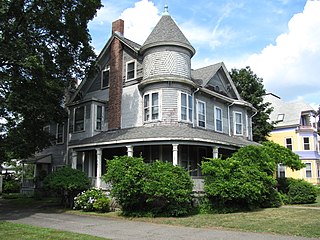
The Newton Highlands Historic District encompasses the historic heart of the village of Newton Highlands in Newton, Massachusetts. When it was added to the National Register of Historic Places in 1986, the district extended along Lincoln Street from Woodward to Hartford Streets, and included blocks of Bowdoin, Erie and Hartford Streets south of Lincoln Street. The district was enlarged in 1990 to include the cluster of commercial buildings on Lincoln Street between Hartford and Walnut Streets.

First Trust Building and Garage, also known as Lloyd's Bank, is a historic 1927 building located on Colorado Boulevard in Pasadena, California. The building was designed by Cyril Bennett and Fitch Haskell; its design incorporates the Mediterranean Revival, Renaissance Revival, and Beaux-Arts styles. The design features decorative exterior stonework, a red tile hip roof topped with a cupola, and a frieze and balustrade on the south facade. The building's interior is decorated with murals depicting scenes from around Pasadena. Caltech professor R. R. Martel designed the building's earthquake-proof support system, which uses steel beams and girders with reinforcing concrete; the system was considered an important advancement in earthquake-proof construction and became a standard form of construction.

The Bonnie and Clyde Garage Apartment is located at 3347½ Oak Ridge Drive in Joplin, Newton County, Missouri, though it actually fronts on 34th Street. The apartment was the location where the Barrow gang hid out after a series of robberies in Missouri and neighboring states. After twelve days, neighbors reported suspicious behavior, and on April 13, 1933, the Joplin Police Department raided the apartment. Two of the police officers were killed by the fleeing fugitives. Undeveloped photographs, left behind by the gang, helped the authorities eventually stop the gang. Stolen merchandise tied the gang concretely to a robbery in Joplin during their stay there. It was built about 1927, and is a two-story building on a poured concrete foundation. It has a gently pitched hipped roof and exposed rafter ends in the American Craftsman style.

The 1616 Walnut Street Building or 1616 Building is a historic high-rise building in the Center City area of Philadelphia, Pennsylvania.

The South Green Fire Station, also known as the Engine Company 1 Fire Station, is located at 197 Main St. in downtown Hartford, Connecticut. Built in 1927, it is an architecturally distinctive example of Classical and Collegiate Gothic Revival architecture, designed by a prominent local firm. The station, as well as the former fire equipment maintenance house, which is located behind it at 36 John Street, were listed on the National Register of Historic Places in 1989. The station presently houses Engine Company 1 and Ladder Company 6 of the Hartford Fire Department.
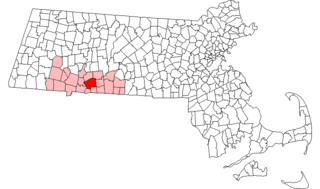
This is a list of the National Register of Historic Places listings in Springfield, Massachusetts.

Portland Fire Station No. 7, located in southeast Portland in the U.S. state of Oregon, is a two-story structure listed on the National Register of Historic Places. Built in 1927, it was added to the register in 1989. It was the last of numerous Portland firehouses to be designed by fire chief and architect Lee Gray Holden, who died of a stroke while visiting the No. 7 firehouse in 1943. The building continued to be used by the city's Fire Department until the 1980s, when it was sold off and used as an automobile garage. It was acquired by a local developer in 2009, and was restored and remodeled for office and retail use.

The Marathon Oil Service Station is a historic automotive service facility at the southeast corner of East 2nd and Spring Streets in downtown Fordyce, Arkansas. It is a single story building constructed out of red and buff brick, with an auto canopy covered in a tile roof. The main facade of the building has a parapet which conceals a barrel roof. The building is divided into two functional bays, an office to the left and a garage bay to the right. The canopy extends in front of the left bay, and is supported by a single brick column, in which there is an original Marathon Oil logo. The building is a well-preserved example of a 1920s service station.

The Sankot Motor Company, also known as the Sankot Garage, is a historic building located in Belle Plaine, Iowa, United States. The historical significance of this building is its association with the increase in all-season travel and the development of businesses to serve them along the Lincoln Highway, the United States's first transcontinental route. It is a brick front building with side walls of clay tile that was constructed on a concrete foundation. The west half of the building was added in 1927. It was operated by O.B. Charles and Sid Sankot until 1937. They also sold Chryslers. Gasoline was sold from 1920 to 1944. F.L. Sankot bought the business in 1937. In addition to vehicle repair he sold Case and Oliver tractors and implements. William and Jerry Sankot purchased the business in 1985, and limited it to passenger, commercial and agricultural vehicle repairs. The building was listed on the National Register of Historic Places in 1995. It was included as a contributing property in the Belle Plaine Main Street Historic District in 2013.

The Cedar Rapids Central Business District Commercial Historic District is a nationally recognized historic district located in Cedar Rapids, Iowa, United States. It was listed on the National Register of Historic Places in 2015. At the time of its nomination it consisted of 60 resources, which included 46 contributing buildings, one contributing structure, 12 non-contributing buildings, and one non-contributing structure. Cedar Rapids was platted on the east bank of the Cedar River as Rapids City in 1841, and it was incorporated under the same name in 1849. Kingston was established on the west bank of the river in 1852. The two smaller communities consolidated in 1870 as Cedar Rapids. The streets were laid out parallel and perpendicular to the river, which flowed from the northwest to the southeast. The Chicago, Iowa and Nebraska Railroad was the first to arrive in the community in 1859 and the tracks were laid on Fourth Street on the eastern edge of the central business district. The first bridge across the river was built at Third Avenue in 1871.

Oak Hill Cemetery is located in Cedar Rapids, Iowa, United States. It was listed as a historic district on the National Register of Historic Places in 2013. At the time of its nomination it consisted of 17 resources, which included 13 contributing buildings, one contributing site, two contributing structures, and one contributing object.
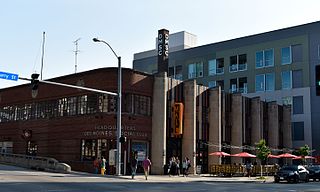
The Des Moines Fire Department Headquarters' Fire Station No. 1 and Shop Building are historic buildings located in downtown Des Moines, Iowa, United States. Completed in 1937, the facility provided a unified campus for the fire department's administration, citywide dispatch, training, maintenance, as well as the increased need for fire protective services in the commercial and warehouse districts in which the complex is located. It was designed by the Des Moines architectural firm of Proudfoot, Rawson, Brooks and Borg, and built by local contractor F.B. Dickinson & Co. The project provided jobs for local residents during the Great Depression, and 45% of its funding was provided by the Public Works Administration (PWA). The City of Des Moines provided the rest of the funds. The radio tower, which shares the historic designation with the building, was used to dispatch fire personnel from 1958 to 1978. The buildings were used by the local fire department from 1937 to 2013. It was replaced by two different facilities. The old fire station and shop building was acquired by the Des Moines Social Club, a nonprofit arts organization.

























